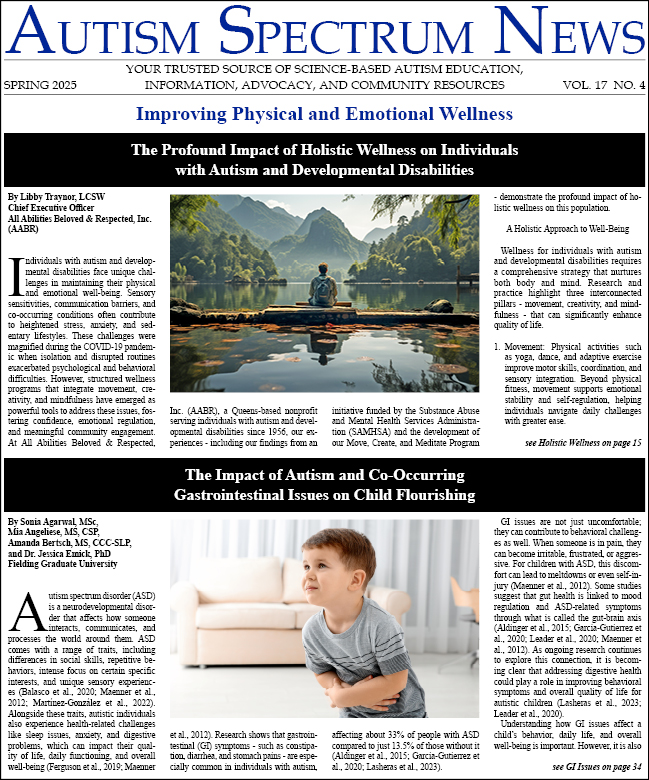-
A Proven Method to Reduce Challenging Behaviors in Any Environment
The behavior challenges related to autism can feel daunting for family, caregivers, and community service organization professionals alike. But dwelling on challenging behaviors leads to a focus on questions such as, “What will we do when this individual displays this challenging behavior...
-
The Effect of Preceding or Antecedent Physiological and Environmental Factors on Challenging Behavior
Challenging behaviors (e.g., aggression, self-injury, and disruption) are prevalent among individuals diagnosed with an autism spectrum disorder (ASD; Hartley, Sikora, & McCoy, 2008). These behaviors are a common referral concern for treatment because they can cause injury, interfere with...
-
Avoiding the Glares and Stares: Dealing with Challenging Behaviors in Community Settings
Ah, victory – another trip to the local grocery store is about to come to a close as you finish bagging up the last few apples for lunches for the week. That is, until half a dozen oranges go rolling past your feet, and you turn around only to notice the bag of goldfish half eaten…the other...
-
Contributing Factors of Aggression and Self-injury in Autism
Although self-injury and aggression are not included in the diagnostic criteria for a diagnosis of autism, they are often associated with the diagnosis (American Psychiatric Association, 2013). These symptoms are often the most problematic and concerning symptoms that caregivers face when seeking...
-
Common Mealtime Concerns in Individuals with ASD
Feeding problems in children with ASD may include selective eating or “picky eaters,” rapid eating (child takes numerous bites within a short period of time), inappropriate mealtime behaviors (e.g., tantrums), and inadequate intake/food consumption. These behaviors can lead to numerous health...
-
Challenging Behavior at School: Using a Functional Behavior Assessment and Behavior Intervention Plan
When addressing behavior problems, a careful assessment provides the foundation for effective and efficient intervention. Consider the following scenario: After struggling with headaches for nearly a week, you visit a doctor. Following a brief discussion, the doctor suggests brain surgery. While...
-
Building Comprehensive, ABA-Informed Services in an Adult Residential Setting
Throughout the United States, services for school-aged children with Autism have been bolstered by IDEA (the Individuals with Disabilities Education Act). Of the services IDEA has made available, those informed by the science of applied behavior analysis (ABA) are gaining broad recognition as the...
-
Bitten by the Truth
Three years ago, at 4 am in the morning, my life began to unravel when my daughter sank her teeth into the fleshy part of my inner thigh. “Mommy, please help me!” she begged as she fell to her knees and grabbed my legs. Then she clamped down hard and held on tight like a pit-bull. I screamed,...
-
Behavior as Desire for Control in Autism Spectrum Disorders
Occasionally we all need a gentle reminder that autism is not an abstraction floating around in the ether. Autism is real precisely because people experience it, and separate cases of autism spectrum disorders differ so markedly because their subjects are unique individuals with different...
-
Awake Challenged, Punctually Challenged, and Underground Thursday Challenged
One of the biggest hurdles that adolescents and young adults on the ASD or LD Spectrum face is having a reversed sleep schedule where they stay awake at night (often playing video games or surfing the internet) and sleeping during the day. This is especially so if students are living independently...




